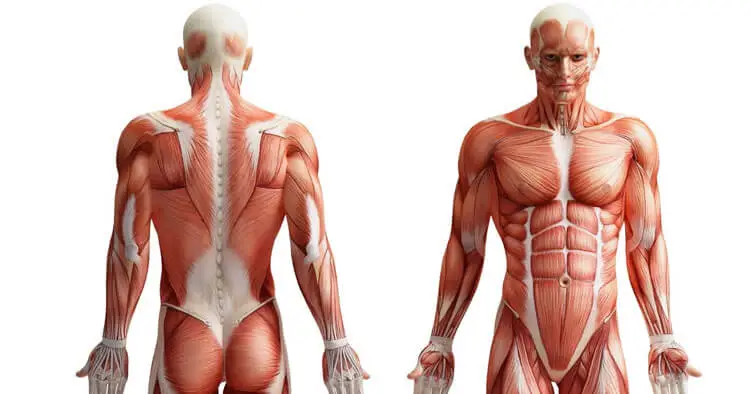
Anatomy BSc (Hons)
Overview
The Anatomy BSc (Hons) programme offers a comprehensive study of human anatomy (body), including its structure, development, function, and related biomedical sciences. Students will get hands-on experience with techniques like immunohistochemistry, cell culture, and gene sequencing.
They will also get to use high-tech tools like electrons, confocal microscopes, and next-generation sequencing.
With this course, students will get a solid foundation in both the theoretical and practical aspects of structural and functional anatomy. This degree will teach them how the human body works in both health and sickness.
They will also develop strong research skills, learning to effectively find, interpret, and evaluate scientific information. In addition to that, they will gain insights into current issues in anatomy, as well as the ethical principles and professional standards that underpin the field.
Objectives
- Combination of cadaveric dissection and human biology exploration.
- Understanding of topical issues, ethical principles, professionalism, and respect.
- Effective communication of ideas to diverse audiences.
- Development of critical thinking and problem-solving skills.
- Safe and correct use of lab equipment.
Prerequisites
- Strong academic background in biology and chemistry.
- English language proficiency (e.g., IELTS, TOEFL).
- Solid communication and interpersonal skills.
- Desire for positive impact.
Curriculum Outline
- Biomedical sciences
- Medical biology
- Molecular and cellular biology
- Biomedical Sciences 2
- Microorganisms, infection and immunity 2
- Structural Basis of Human Function
- Essentials of Embryology
- Cells to organisms 2
- Biomedical sciences 3 - cornerstone to the theme of 'developing knowledge from experiment'
- Anatomy and development 3
- Mechanisms of brain development 3
Teaching Method
- Lectures
- Seminars
- Tutorials
- Discussion groups
- Practical sessions
- Workshops
- Laboratory work
- Self-study
- Video recordings (Optional)
Modules
- Biochemistry
- Chemistry for the Biosciences
- Genetics & Molecular Biology
- Cell Biology & Neuroscience
- Fundamentals of Anatomy and Developmental Biology
- Fundamentals of Physiology
- Fundamentals of Pharmacology
- Skills for the Biosciences
- Emergence of Vertebrate Form & Function
- Synthetic Anatomy
- Cell Biology
- Human & Molecular Genetics A/B
- Biomechanics
- Introduction to Forensic Science
- Cell and Molecular Physiology
- Molecular Basis of Gene Expression
- Communicating Science
- Tissue Pathology
- Neuroscience
- Advanced Human Anatomy
- Birth Defects
- Cellular Basis of Disease
- Developmental Neurobiology
- Genes & Development
- Biomechanics and Motor Control of Human Movement
- 3D Clinical Anatomy
Assessment Methods
- Essays
- Coursework
- Presentations
- Group work
- Practical examinations
- Digital communications
Course Duration
This programme may vary depending on the institutions and countries, but the general standard options in the UK are:
- 04 years (Full-time).
Facilities
- Modern cadavers, dissection tools, and microscopes
- State-of-the-art histology labs
- Advanced molecular biology labs
- Biochemistry labs
- Bioinformatics labs
- Well-stocked libraries
- IT facilities
- Computer labs
- Student common rooms
- Healthcare facilities
- Sports/fitness facilities
- Cafeterias and dining halls
- Student support services
- Human Anatomy resource centres
- 3D Printing facilities
- Virtual reality labs
Career Pathways
- Doctor
- Dentist
- Teachers
- Radiographer
- Physiotherapist
- Biomedical scientist
- Clinical anatomist
- Forensic scientist
- Food scientists
- Company managers
- Business analysts
- Scientific copy editors
- Research project coordinators
- Museum Curators and Science Communicators
Fees and Fundings
- Tuition fees are £35,800 per year and may vary depending on the institution.
- Scholarships, grants, and financial opportunities are available.
- Government loan aid is available.
Entry Requirements
- A-level standard offer: ABB
- A-level contextual offer: BBC
- IELTS 6.5 overall with 6.0 in all skills
- GCSE English Language grade C or 4
- Strong communication and interpersonal skills
- A strong academic record
Field Work and Internships
- Field trips to archaeological sites or natural history museums to study anatomists.
- Internships in pharmaceutical companies, biotechnology firms, or medical device companies.
- Opportunities for practical experience in laboratories, hospitals, and research institutions.
Certifications
- Certified Anatomical Sciences Educator (CASE)
- Certified Clinical Anatomist
- Certified Forensic Scientist
- Certified Human Anatomist (CHA)
- First Aid and CPR Certification
- Hazardous Materials Handling Certification
- Certified Lab Assistant (CLA)
- Bioinformatics Certifications
- Health and Safety Certifications
- Data Analysis Certifications
- Computer Skills Certifications
- Teaching Qualifications
- Project Management Certifications
- Language Certifications
Intakes
In general, it takes twice a year (fall and spring), but may vary like:
- Fall (September/October)
- Spring (January/February)
- Summer (May/June)
Student Testimony
"I have really enjoyed my time at uni, specifically being back on campus for learning" Says - "Jenna, Anatomy BSc (Hons)."
Frequently asked questions
Anatomy is the scientific study of the structure of organisms. Human anatomy focuses on the structure of the human body.
